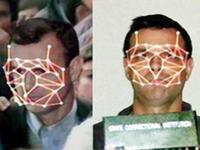-
Simulations help firefighters in risky operations

Firefighters often put their lives at risk during operations, so it would be very helpful if they had reliable tools to help them do their job safely and effectively; now, a modular simulation kit is set to help develop new information and communication technologies — and ensure they are tailored to firefighters’ needs from the outset.
-
-
The reasons for NYC’s dramatic crime decline
New York City saw more than 80 percent drop in crime from 1990 to 2009; a new says that changes in police tactics, rather than imprisoning more people are trying to win the war on drugs, explain why NYC has become a much safer city
-
-
Mentalix wins contract to convert Texas fingerprint archive
Mentalix Inc. was recently awarded a contract by Texas’ Department of Public Safety’s Crime Records Service to scan more than 1.4 million fingerprint cards from its oldest archive
-
-
Law enforcement fatalities rise sharply for second year in a row

For the second straight year, law enforcement fatalities in the United States rose with 173 federal, state, and local officers killed in the line of duty during 2011; this represents a 13 percent increase over the 153 officers killed in 2010 and a 42 percent spike when compared to the 122 officers who lost their lives in the line of duty in 2009
-
-
Emergency responders prepare for chaotic New Year’s Eve
Emergency responders across the nation are gearing up for another busy New Year’s; each year the holiday sends overly enthusiastic revelers to the emergency room with alcohol-fueled deaths and injuries, but this New Year’s is expected to be particularly chaotic as it falls on a Saturday, giving party-goers all day to imbibe and a full day to recover
-
-
U.S. Army to deploy VTOL UAV
The U.S. Army is developing a helicopter-like, VTOL (vertical-take-off-and-landing) UAS (unmanned aircraft system) with a DARPA-sponsored ARGUS wide-area surveillance sensor suite designed to beam back information and images of the surrounding terrain
-
-
Sector Report for Tuesday, 27 December 2011: Law Enforcement Technology
This report contains the following stories.
Plus 1 additional story.
-
-
StressVest adds physical consequences to training
To give training scenarios added realism, StressVest Inc. has developed a vest which provides physical consequences to an exercise without endangering participants
-
-
ShotSpotter expands to Midwest
Three cities in the Midwest recently announced plans to install gun-shot detecting systems; ShotSpotter, manufactured by SST Inc., has enabled law enforcement agencies in more than sixty cities across the country to know exactly when a shot is fired, where it came from, and how many
-
-
FBI’s eGuardian integrated with Memex Patriarch
Deployed over the last three years, FBI eGuardian is a nationwide Suspicious Activity Reports (SARs) system focused on counterterrorism tips and leads; the agency has now integrated eGuardian with Patriarch Intelligence Management Platform from Memmex
-
-
Union Pacific not liable for drugs hidden on board trains
On Monday a federal judge ruled against U.S. border officials, stating that they overstepped their bounds in fining Union Pacific millions of dollars for failing to uncover illegal drugs hidden aboard their rail cars by smugglers
-
-
Cartels eye Puerto Rico as new cash smuggling route
Over the past year law enforcement officials in Puerto Rico have seized an increasing amount of smuggled cash, indicating that cartels may be shifting their attention to the island as an alternative route to transport drug money
-
-
NORAD is ready to track Santa's flight
The North American Aerospace Defense Command is getting ready to track Santa’s yuletide journey. The NORAD Tracks Santa Web site went live the other day featuring a Countdown Calendar, a Kid’s Countdown Village complete with holiday games and activities that change daily, and video messages from students and troops from around the world
-
-
NY counties receive money to prepare for emergencies
The magnitude of Hurricane Irene and Tropical Storm Lee posed serious communications challenges to the response and recovery efforts among many New York counties; these counties are now receiving $20 million in funding to help localities better respond to emergency situations
-
-
Facial recognition systems for Orange County, California

Hunter Systems will sell and configure up to thirty-one Hunter SmartShot systems to twenty police departments in Orange County and to the Orange County Sheriff’s Department
-
More headlines
The long view
Are We Ready for a ‘DeepSeek for Bioweapons’?
Anthropic’s Claude 4 is a warning sign: AI that can help build bioweapons is coming, and could be widely available soon. Steven Adler writes that we need to be prepared for the consequences: “like a freely downloadable ‘DeepSeek for bioweapons,’ available across the internet, loadable to the computer of any amateur scientist who wishes to cause mass harm. With Anthropic’s Claude Opus 4 having finally triggered this level of safety risk, the clock is now ticking.”
“The Federal Government Is Gone”: Under Trump, the Fight Against Extremist Violence Is Left Up to the States
As President Donald Trump guts the main federal office dedicated to preventing terrorism, states say they’re left to take the lead in spotlighting threats. Some state efforts are robust, others are fledgling, and yet other states are still formalizing strategies for addressing extremism. With the federal government largely retreating from focusing on extremist dangers, prevention advocates say the threat of violent extremism is likely to increase.
Luigi Mangione and the Making of a ‘Terrorist’
Discretion is crucial to the American tradition of criminal law, Jacob Ware and Ania Zolyniak write, noting that “lawmakers enact broader statutes to empower prosecutors to pursue justice while entrusting that they will stay within the confines of their authority and screen out the inevitable “absurd” cases that may arise.” Discretion is also vital to maintaining the legitimacy of the legal system. In the prosecution’s case against Luigi Mangione, they charge, “That discretion was abused.”
Autonomous Weapon Systems: No Human-in-the-Loop Required, and Other Myths Dispelled
“The United States has a strong policy on autonomy in weapon systems that simultaneously enables their development and deployment and ensures they could be used in an effective manner, meaning the systems work as intended, with the same minimal risk of accidents or errors that all weapon systems have,” Michael Horowitz writes.
Ukraine Drone Strikes on Russian Airbase Reveal Any Country Is Vulnerable to the Same Kind of Attack
Air defense systems are built on the assumption that threats come from above and from beyond national borders. But Ukraine’s coordinated drone strike on 1 June on five airbases deep inside Russian territory exposed what happens when states are attacked from below and from within. In low-level airspace, visibility drops, responsibility fragments, and detection tools lose their edge. Drones arrive unannounced, response times lag, coordination breaks.
Shots to the Dome—Why We Can’t Model US Missile Defense on Israel’s “Iron Dome”
Starting an arms race where the costs are stacked against you at a time when debt-to-GDP is approaching an all-time high seems reckless. All in all, the idea behind Golden Dome is still quite undercooked.
